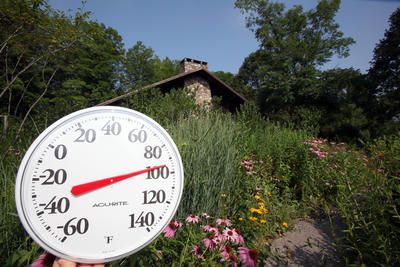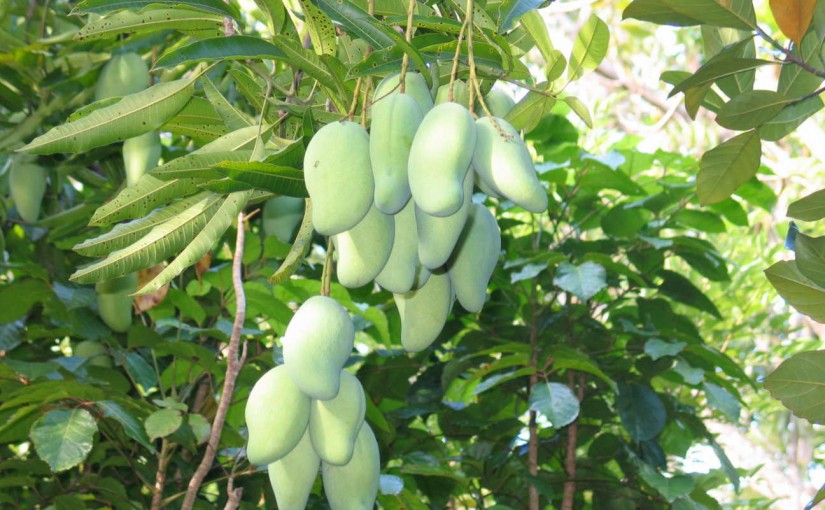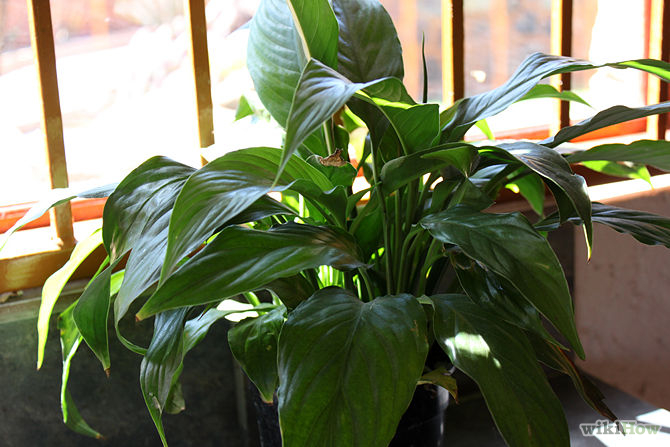For many passionate gardeners they’ve had to find out what the advantages are for Garden soil vs. Potting mix. Depending on your application with regard to the soil’s moisture and nutrient retention characteristics you will want one over the other.
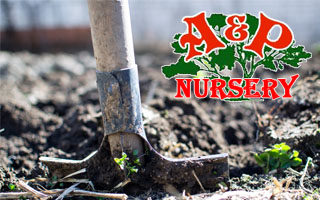
Knowing your types of soil can mean the difference between a successful and satisfying season of gardening and wasting your time and effort trying to cultivate ground that will never pay you back by rewarding your efforts with a vibrant and healthy garden.
Potting Mix
Potting mix is a manufactured soil type and one caveat that it carries is the fact that it does not contain very much actual organic material. The main feature of potting soil is its ability to retain moisture within a container that contains a plant or several plants. As time passes potting soil can become dry and will actually begin to repel water as it ages. When this happens topping off your potting soil with organic material is recommended and very necessary in order for your potted plants to thrive.
Garden Soil
Garden soil and top soil usually come together in mixes with 50/50 ratios for each soil type. These soils are best used in open beds as opposed to enclosed areas such as pots. The reason for this is because these soil types tend to retain too much moisture when contained in enclosures as opposed to constantly being exposed to open air. Top soil and garden soil also has a tendency to pull away from the sides of containers when it is allowed to dry out. Some soils that contain clay can actually be too heavy for pots and will settle and compact in a manner similar to what concrete does.
Loam vs. Topsoil
Gardening Topsoil – Being the utmost layer of soil, topsoil can be up to 12 inches deep. Being reliant on whatever organic matter has come to rest on it topsoil can vary between being very nutrient rich and not really worth much when coming to cultivating a healthy garden. Also being reliant on geographical region it will just depend on if your clay, sand, or silt is present and in which distribution in your garden. In addition depending on the area and previous owners it might contain chemicals and or pesticides.
Gardening Loam – This is a classification given to soil when the distribution of sand, clay and silt is relatively evenly distributed. Generally speaking loam contains about 50% sand, 30-40% silt and 7-20% clay. When people say they are selling loam it’s important to understand that calling something loam doesn’t specify the content of organic material but simply that it’s got a more even content of the other soil types.
Buying The Right Soil
It’s easy to confuse Topsoil and Loam because you can just naturally have a loam soil in your yard. To keep them straight it’s easy to remember that topsoil simply refers to the location of the soil, while loam is a reference to the quality of the soil being balance between the other soil types.





When buying your topsoil a good rule of green-thumb is to pay attention to the type of topsoil you’re being offered. It can just be topsoil, or it can be loam topsoil. You can actually judge it for yourself and what to look for is for the soil to be crumbly yet not sticky or gritty. It should also be firm enough to roll between your hands when moist.

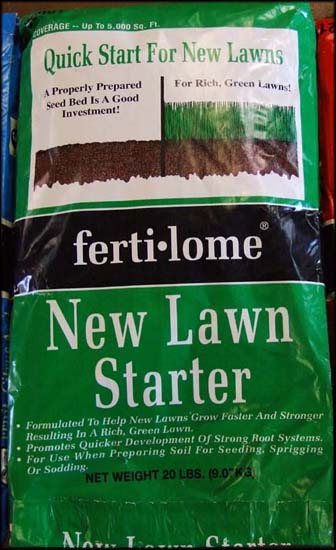
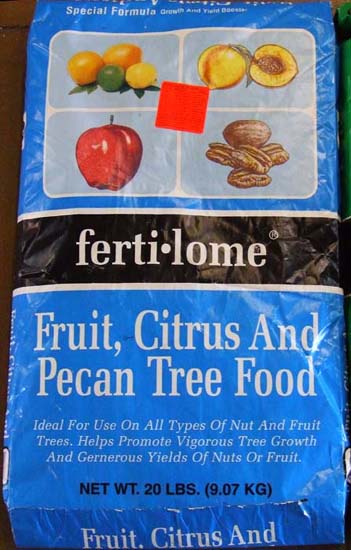


Garden Soil Types
There are 6 main categories of soil types that you might find. The way you categorize which type of soil you have in your garden depends on which type of particle happens be in the majority in your soil.
Clay Soils
Clay soils – This type of soil has over 25% clay. It’s also colloquially known as heavy soil. Despite the fact that this type of soil can be potentially high in nutrients they have a tendency to retain an excess of water due to capillary attraction with the tiny spaces between the plethora of clay particles. This means that it takes longer to drain and longer to warm up than sandy soils. During summer this soil can get so dry that cracks can show on its surface. During the wetter months it tends to be easily compacted when walked on while wet. This can be a challenging type of soil to cultivate, but with proper plant selection and a bit of patience it can be very rewarding.
This can be an excellent soil for shrubs and perennials such as Aster, Bergamot, Flowering quince and Helen’s flower. Early soft berry crops and vegetables can be problematic to grow in clay rich soil because of it’s compact and cool nature. In contrast summer crop vegetables, fruit trees and even ornamental trees and shrubs can thrive on this soil.
Chalky Soils
Chalky Soils – Having larger grained and usually stonier consistency than the other soils this soil type is free draining and tends to sit over chalk or limestone bedrock. It’s high alkalinity can sometimes lead to yellowish leaves and stunted growth. This tendency can be addressed by simply using some fertilizers to balance the PH and even adding some humus can counteract the quick draining and improve workability.
The types of plants that can thrive in this soil type are trees, bulbs like Lilac lilies, and vegetables such as beets, sweet corn, beets, and spinach.
Sandy Soils
Sandy Soils – In contrast to your Clay Soils the sand content is the vast majority of this soil type. Additionally it’s known as light soil types. During watering or rain storms they drain quickly and are easy to work and cultivate. During the spring and morning these soils warm up more quickly than Clay Soils. The downside unfortunately is that they don’t hold nutrients and they dry out quickly. Another potential problem is high levels of natural acidity in Sandy Soil.
As one of the most common soil types Sandy soil can excel at growing things like shrubs and bulbs. It is great for Tulips, Hibiscus and tree mallow. A wealth of vegetables do very well in this soil type, parsnips, carrots, and potatoes do very well. In fact many of our produce is grown commercially in sandy soils. These include zucchini, corn, squash, peppers, strawberries, lettuce, collard greens, peanuts, watermelon, tomatoes and lettuce.
Silt Soils
Silt Soils – The size of the particles are somewhere between your clay and sand type materials. Its mineral origin is feldspar and quartz. It’s commonly found in places where long gone lakes or rivers once existed and nutrient rich materials came to rest. It’s considered by many to be among the most fertile soils available. This soil drains better than Clay Soil but retains enough moisture to support healthy plant growth.
This is a great soil for things like grass, climbers, shrubs and perennials. Trees like Willow, Cypress, Dogwood and Birch love this soil because of its moisture content. In fact this can also be a great option for most of your fruit and vegetable crops. Given there is sufficient drainage.
Loam Soils
Loam Soils – This type of soil is a combination of the soil types and ends up avoiding the extremes that Clay and Sandy soil types tend to have while still being very fertile. Loams are easy to work and drain well. There are Clay-Loam and Sandy-Loam variants just depending on the primary characteristics.
Being the balanced soil type most vegetable and berry crops will do very well in this soil. You can also grow things like bamboo, perennials, shrubs, and more. . .the list of applications is exhaustive for this soil which is what makes it such a strong option for the serious gardener. It does take a bit of maintenance with rotating your crops and maintaining the moisture of this soil, especially during the hotter and drier months.
Peat Soils
Peat Soils – Predominantly comprised of organic matter these are usually very fertile and hold a bunch of moisture. However it is rarely found it gardens. A soil is considered peat when it has in excess of 30% organic matter (dry mass) that has accumulated and composted on the surface. Technically it is a heterogeneous mix of decomposed plant material that’s decayed in water saturated, oxygen free environment.
Being a great soil type for root type crops that thrive in well-drained soils you’ll have great success growing things like Witch Hazel, Heather, Camellia, and Lantern Trees. As far as vegetables that love this soil type you’ll find legumes, root crops, and even salad type crops excel in this soil type.
East Phoenix Valley Soil & Fertilizer
The experts at A&P Nursery stand at the ready with a wealth of knowledge when it comes to all of your different gardening questions. We can help you ammend your soil, use the right fertilizers for your plants, and even help you understand best practice watering for your soil type. Give us a call we’ll help you develop a successful approach from the soil up to having a healthy and satisfying garden. You can choose whichever location is most convenient for you.
A & P Nursery
40370 N. Gantzel Rd.
Queen Creek, AZ 85240
480-655-5789
A & P Nursery
2645 W. Baseline Rd.
Mesa, Arizona 85202
480-839-5362
A & P Nursery
6129 E. Brown Rd.
Mesa, Arizona 85205
480-396-8800
A & P Nursery &
Lawnmower Shop
2601 E. Baseline Rd.
Gilbert, Arizona 85234
480-892-7939


 What does it take to vegetable garden in Arizona? – Gardening in Arizona can present unique challenges whether you are growing a garden for aesthetic purposes or one that produces vegetables and fruits. The intense desert climate in Arizona only lends itself to certain plant species that can flourish in the unique and dry climate. This article is going to focus on vegetable bearing gardens and how to maximize their potential if you happen to live in the desert Southwest.
What does it take to vegetable garden in Arizona? – Gardening in Arizona can present unique challenges whether you are growing a garden for aesthetic purposes or one that produces vegetables and fruits. The intense desert climate in Arizona only lends itself to certain plant species that can flourish in the unique and dry climate. This article is going to focus on vegetable bearing gardens and how to maximize their potential if you happen to live in the desert Southwest. What’s the best location for my vegetable garden in Arizona? – The first factors you need to consider are going to be the basics that will apply to gardening no matter where you are located on the planet; soil quality, water, sun exposure, timing. Making sure you have an adequate plan and location that will fully facilitate your garden’s anticipated needs is going to have the most influence on the potential success of your garden and the extent that the success can be maximized. Scout your property and pay close attention to the lay of the land and its surroundings. If you can’t find a plot with enough sun exposure, you may need to plant or remove a tree or two and also place or remove any objects you may want that can assist in the proper amount of sunlight reaching the hungry plants in your garden. Vegetables need at least 6 hours of sunlight; they also need adequate time in the shade as the AZ sun can be quite harsh on overexposed plants.
What’s the best location for my vegetable garden in Arizona? – The first factors you need to consider are going to be the basics that will apply to gardening no matter where you are located on the planet; soil quality, water, sun exposure, timing. Making sure you have an adequate plan and location that will fully facilitate your garden’s anticipated needs is going to have the most influence on the potential success of your garden and the extent that the success can be maximized. Scout your property and pay close attention to the lay of the land and its surroundings. If you can’t find a plot with enough sun exposure, you may need to plant or remove a tree or two and also place or remove any objects you may want that can assist in the proper amount of sunlight reaching the hungry plants in your garden. Vegetables need at least 6 hours of sunlight; they also need adequate time in the shade as the AZ sun can be quite harsh on overexposed plants.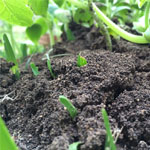 Which soil type is best for growing vegetables in Arizona? The vast majority of Mesa plants absolutely love gardening loam. Loam is a soil classification that means that the soil is a balance clay and sandy soil. This gives you the benefits of both and alleviates the drawbacks.
Which soil type is best for growing vegetables in Arizona? The vast majority of Mesa plants absolutely love gardening loam. Loam is a soil classification that means that the soil is a balance clay and sandy soil. This gives you the benefits of both and alleviates the drawbacks.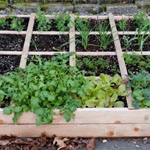 What’s the best size of vegetable garden to start with? – The size of your garden is a factor that you need to decide early on as well. Starting small is best for most people because a smaller garden is much easier to manage. Starting smaller affords you the opportunity to know how much time and effort goes into even a small amount of plants, which will let you know how big of a garden you can actually attend to adequately.
What’s the best size of vegetable garden to start with? – The size of your garden is a factor that you need to decide early on as well. Starting small is best for most people because a smaller garden is much easier to manage. Starting smaller affords you the opportunity to know how much time and effort goes into even a small amount of plants, which will let you know how big of a garden you can actually attend to adequately.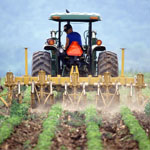 How do I prepare the ground for my Mesa vegetable garden? – Once you find the right plot for your garden you may have some work to do to properly prep it for planting. Sod may be on the plot you select and will need to be removed in order to be able to till the soil. Once you have removed the sod and tilled the soil, you can add organic compost, manure and planting soil before tilling a final time before starting the planting process.
How do I prepare the ground for my Mesa vegetable garden? – Once you find the right plot for your garden you may have some work to do to properly prep it for planting. Sod may be on the plot you select and will need to be removed in order to be able to till the soil. Once you have removed the sod and tilled the soil, you can add organic compost, manure and planting soil before tilling a final time before starting the planting process.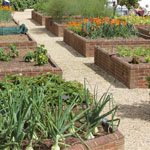 How do I control soil quality and watering better? – Another way to get started with your garden is to use
How do I control soil quality and watering better? – Another way to get started with your garden is to use  What vegetables grow best in Arizona? – The next factor to consider is which vegetable bearing plants can thrive in Arizona. The crops that are easiest to grow in AZ are green beans, herbs, peppers, sugar, snap peas, tomatoes, radishes, and carrots. Sticking to these varieties initially will not only set you up for success, it will give you valuable experience that will be much needed if you plan on branching out and growing varieties that are harder to foster in AZ. The best times of year to plant the seeds for the plants species listed above is between the months of November and March. Understand that around January frost becomes more likely and you should make sure your crops are covered so they do not become damaged or even die, due to frost exposure.
What vegetables grow best in Arizona? – The next factor to consider is which vegetable bearing plants can thrive in Arizona. The crops that are easiest to grow in AZ are green beans, herbs, peppers, sugar, snap peas, tomatoes, radishes, and carrots. Sticking to these varieties initially will not only set you up for success, it will give you valuable experience that will be much needed if you plan on branching out and growing varieties that are harder to foster in AZ. The best times of year to plant the seeds for the plants species listed above is between the months of November and March. Understand that around January frost becomes more likely and you should make sure your crops are covered so they do not become damaged or even die, due to frost exposure. Can I grow two crops of vegetables in Mesa? There is a unique advantage to growing vegetables in Arizona and that is the fact that many vegetables can have double growing seasons. The fact that you can double your yearly harvests in AZ means that you potentially grow twice as much produce and that can save you money on groceries while eating fresh produce almost year round. As your green thumb becomes established, your harvests will increase and become exponentially more plentiful. This article is about vegetables, but is should be noted that the same goes for fruit and having citrus growing year round will provide a great aroma to your property as the trees bud and bear fruit.
Can I grow two crops of vegetables in Mesa? There is a unique advantage to growing vegetables in Arizona and that is the fact that many vegetables can have double growing seasons. The fact that you can double your yearly harvests in AZ means that you potentially grow twice as much produce and that can save you money on groceries while eating fresh produce almost year round. As your green thumb becomes established, your harvests will increase and become exponentially more plentiful. This article is about vegetables, but is should be noted that the same goes for fruit and having citrus growing year round will provide a great aroma to your property as the trees bud and bear fruit.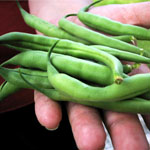 What’s the best vegetable to grow in Arizona? Green Beans are one of the best vegetables to grow in AZ. The soil in Phoenix is especially well suited to the growing of green beans. November is the recommended time of year to plant Green Bean seeds, just remember to cover the plants once frost becomes a threat. One option to avoid frost is to start the plants life indoors, moving them outside once the frost season has passed. You can also place tomato cages around your Green Bean plants in order to consolidate space in your garden. Sugar Snap peas are another vegetable that grows well in the same window. You can follow the same steps to avoid frost with Sugar Snap Peas that we mentioned using with Green Beans.
What’s the best vegetable to grow in Arizona? Green Beans are one of the best vegetables to grow in AZ. The soil in Phoenix is especially well suited to the growing of green beans. November is the recommended time of year to plant Green Bean seeds, just remember to cover the plants once frost becomes a threat. One option to avoid frost is to start the plants life indoors, moving them outside once the frost season has passed. You can also place tomato cages around your Green Bean plants in order to consolidate space in your garden. Sugar Snap peas are another vegetable that grows well in the same window. You can follow the same steps to avoid frost with Sugar Snap Peas that we mentioned using with Green Beans. Another vegetable that loves the long growing year in Arizona is Parsley. Parsley absolutely loves the Arizona climate and can thrive as much as you want it too. You may actually have to eventually limit the parsley as it can start to take over your garden. Planting in the springtime is recommended and once your plants begin to mature, you can have fresh parsley at the ready year round.
Another vegetable that loves the long growing year in Arizona is Parsley. Parsley absolutely loves the Arizona climate and can thrive as much as you want it too. You may actually have to eventually limit the parsley as it can start to take over your garden. Planting in the springtime is recommended and once your plants begin to mature, you can have fresh parsley at the ready year round. What types of seeds are best for beginners in Phoenix? For the beginner gardener it helps to have a type of seed that germinates quickly and is heartier. In Arizona, it is best to select seeds that have gestation periods of 60 days or less as they are the easiest to foster in the desert climate.
What types of seeds are best for beginners in Phoenix? For the beginner gardener it helps to have a type of seed that germinates quickly and is heartier. In Arizona, it is best to select seeds that have gestation periods of 60 days or less as they are the easiest to foster in the desert climate. What tools do I need to garden in Arizona? – Like most things in life the right tools for the job makes the job that much easier, and more fun. A good pair of gloves for the handling of prickly items, and also to offer a little protection from insects goes a long way. You’ll want a sturdy shovel for those pesky rocks and tougher soil that you might need to dig in to plant items with deeper root system, such as trees. Having a garden spade makes maintaining edges around flower beds and the preparation for installing raised garden beds much easier than using a rounded shovel edge.
What tools do I need to garden in Arizona? – Like most things in life the right tools for the job makes the job that much easier, and more fun. A good pair of gloves for the handling of prickly items, and also to offer a little protection from insects goes a long way. You’ll want a sturdy shovel for those pesky rocks and tougher soil that you might need to dig in to plant items with deeper root system, such as trees. Having a garden spade makes maintaining edges around flower beds and the preparation for installing raised garden beds much easier than using a rounded shovel edge. How do I water my vegetable Garden in Arizona? – Depending on the type of garden you plant and which vegetables you choose you will need different watering systems. But having an automated system makes it that much easier for the passionate gardener. You can get drip lines that put the water directly on the ground next to your vegetables instead of sprinklers, which are best suited for water lawns.
How do I water my vegetable Garden in Arizona? – Depending on the type of garden you plant and which vegetables you choose you will need different watering systems. But having an automated system makes it that much easier for the passionate gardener. You can get drip lines that put the water directly on the ground next to your vegetables instead of sprinklers, which are best suited for water lawns.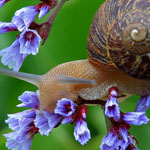 How do I keep pests away from your vegetable garden? – There are various kinds of pests you can encounter here in Arizona. Some will need professional removal, such as venomous snakes or scorpions. Contact a licensed professional that has the training and right equipment to remove such pests. For the rest of the insects and foraging animals you can use chicken wire or other types of fencing to keep them out. As for insects there are different kinds of sprays available at your local gardening shop.
How do I keep pests away from your vegetable garden? – There are various kinds of pests you can encounter here in Arizona. Some will need professional removal, such as venomous snakes or scorpions. Contact a licensed professional that has the training and right equipment to remove such pests. For the rest of the insects and foraging animals you can use chicken wire or other types of fencing to keep them out. As for insects there are different kinds of sprays available at your local gardening shop.



